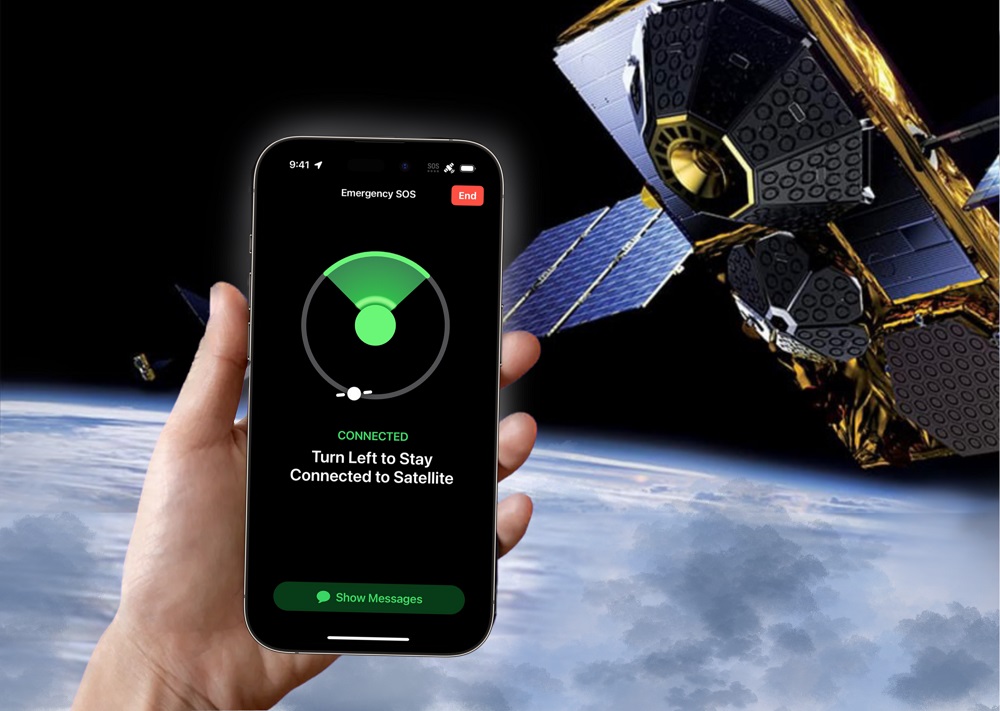TAMPA, Fla. — Globalstar has secured permission to start deploying up to 17 improved direct-to-smartphone connectivity satellites next year despite SpaceX objections.
The Federal Communications Commission authorized the proposed satellites Aug. 16 and extended the company’s operating license by 15 years to 2039.
However, the U.S. regulator deferred deciding on plans to deploy another nine satellites, which Globalstar intends to use as in-orbit spares, until the operator updates its orbital debris mitigation plan.
Covington, Louisiana-based Globalstar currently operates 31 satellites, comprising seven dubbed HIBLEO-4 that are licensed by the United States and 24 spacecraft called HIBLEO-X under France.
While deployed more than a decade ago to provide L-band connectivity to specialized handsets and remote devices, the satellites now also support SOS and messaging services for the latest iPhones under a transformational partnership with Apple.
Globalstar awarded Canada’s MDA a $327 million contract in 2022 to build 17 satellites, with options for up to nine additional satellites at $11.4 million each, after Apple agreed to cover most of the costs to replenish the constellation.
SpaceX is under contract to launch the constellation, and Globalstar aims to deploy up to eight of them before the end of 2025.
Globalstar has repeatedly declined to comment on what upgrades could be coming to cellular subscribers with iPhones that can access its refreshed constellation.
SpaceX opposition
SpaceX is currently testing a rival direct-to-smartphone constellation as part of its Starlink broadband constellation in low Earth orbit (LEO).
The company had called on the FCC to force Globalstar to assess whether its upcoming satellites could interfere with other Mobile Satellite Services, such as SpaceX’s proposed MSS network, before clearing the constellation.
However, the FCC agreed with Globalstar that the operator did not need to submit interference analysis because the proposed satellites use previously authorized frequencies and technical parameters.
The regulator also dismissed SpaceX’s arguments that Globalstar should only be allowed to seek permission to replace the seven HIBLEO-4 satellites licensed under the United States.
“Although some of its satellites are currently French-licensed, in this instance these satellites have always been authorized to provide service to the United States,” FCC Space Bureau Chief Julie Kearney wrote in the order, “and operate effectively as one system with the U.S. licensed satellites.”
Globalstar intends to phase out or retire the French-licensed HIBLEO-X satellites so its entire constellation is authorized under the United States.
The operator was previously authorized to operate a network of 48 satellites but intends to downsize the constellation to 26 spacecraft.
Debris concerns
Globalstar satellites operate at 1414 kilometers, much higher than many other LEO systems.
In the event of a total loss of control of one of the satellites at an insertion orbit of around 700 kilometers, Globalstar estimates it would take around 863 years for the spacecraft to de-orbit and break up in the atmosphere naturally.
The FCC ordered Globalstar to undertake a series of orbital debris mitigation measures to reduce the risk of creating long-term hazards in space as part of its license, including submitting an updated casualty risk analysis before satellite deployment.
From an initial altitude of 680-700 kilometers, Globalstar must show how its satellites can safely climb to an operational altitude of 1414 kilometers and lower themselves at the end of their mission to about 400 kilometers, where they would naturally de-orbit within five years.
“In particular, we note that the failure of a satellite at the insertion orbit or operational orbit would result in creation of long-term debris,” Kearney wrote.
“Therefore, we condition this grant on Globalstar reporting to the Commission any inability to command the Globalstar replacement satellites above 400 kilometer altitude.”
Globalstar must also coordinate and collaborate with NASA to avoid impacting science missions while mitigating any impact of its satellites on optical ground-based astronomy.
